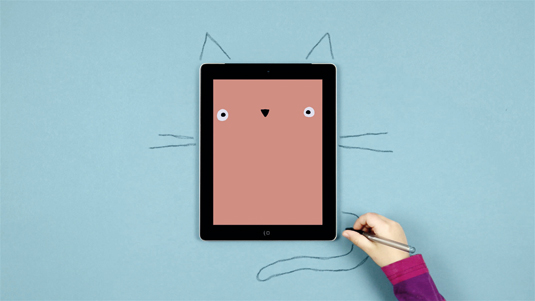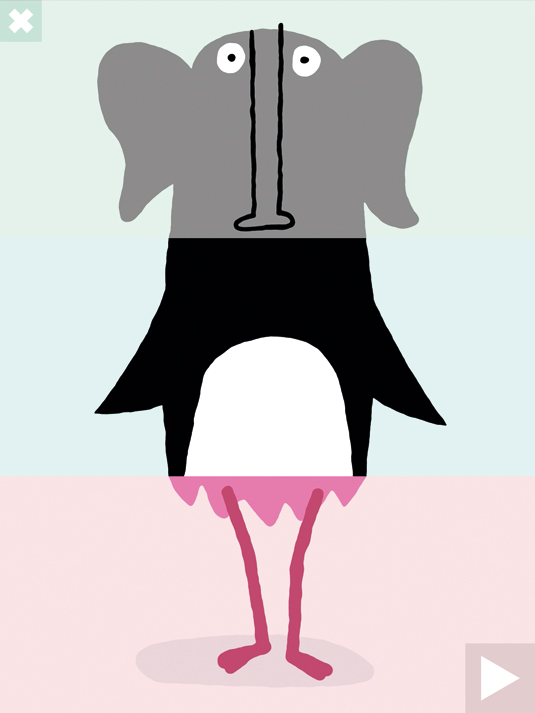19 character design tips from pro creatives
Carve your niche as a character designer with these tips from the industry's most successful artists.
10. There's no formula
In fact, when it comes to capturing the essence of great character design, TADO insists that a definitive set of 'tick the box' characteristics doesn't really exist, nor should it.
"There are certainly formulas for making things cute, intimidating, passive and so on, but we think the really fun characters are usually the ones that bypass these rules."
11. Invest in your imagination

TADO's wooden Panda Otaku figures have been sold in limited runs at events like ToyCon, which helped secure a special commission from Sanrio last October (see case study). It makes a strong case for the power of the passion project.
"Making time to do your own stuff is incredibly important, especially from a commercial point of view," says Tang. "It's a great way to learn new tricks and often leads to fresh avenues and opportunities. It might just lead to your dream commission."
12. Unleash your inner child
"Big eyes, peculiar shapes and colours. I draw everything that crosses my mind," reveals Guatemalan illustrator Muxxi, whose love of the Japanese Kawaii movement is revealed in her colourful drawings of 'magical creatures', commissioned by ChattyFeet socks, decal brand Blik and Venezuelan band Roboto, amongst others.
"Everything comes very naturally to me now. I can go as far as I want, be spontaneous and I never know how it's going to end."
13. Less can be more
Muxxi's approach is in direct contrast to Italian designer Lucas Zanatto, who prefers a rather more minimalist approach. A graduate from the Istituto Europeo di Design Milan, Zanatto has a background in motion graphics and product design, and likes to combine analogue and digital media, playing around and exploring new ways of creating animations.
Daily design news, reviews, how-tos and more, as picked by the editors.
"Mostly I try to use less and approach projects in the simplest way – to show and express messages and emotions. Characters have for a long time been part of my work and they always fascinate me."
14. Create a set of rules

Zanatto advises creating a set of rules for characters that define their graphical elements: "In this way, you build a family," he explains. "After that you have a lot more freedom to play with the sizes and proportions of these elements to create different characters that form part of this family."
15. Cut a clean silhouette
Illustrator James Wilson, who goes under the moniker of Jambonbon, aspires to convey personality and feeling in the most immediate way, with the use of bold, simple shapes that cut clean silhouettes.
16. Know how your characters will move
"I almost always design my characters with animation at the back of my mind, even if they don't end up being animated," says Wilson, whose first job was creating character turnarounds and props in flash for a 2D series at A Productions in Bristol, shortly after graduating. "If I can imagine them moving, it means I can pose them," continues Wilson. "I love a good GIF."
17. Inspiration is everywhere

Zanatto likes to roam the Finnish countryside armed with a pair of disembodied eyes, transforming inanimate objects and the natural landscape into his own collection of characters, documented on a dedicated Tumblr page.
Titled Having A Face, the website provides an online platform for Zanatto to explore and experiment creatively away from his commercial work.
18. Think 3D
For TADO, there isn't much of a boundary between working in a physical sense and working in a digital/2D way.
"We tend to think in 3D regardless of what we're doing, so when we draw a character flat on the screen we tend to have a pretty good idea of how it will work in a 3D sense or what the back view of the character would look like regardless of whether it will ever be used in that way."
19. Go against the norm
Advocating the use of humour and personality as key components in their character development, TADO say that they tend not to reference too many things literally, but instead try to imagine how they'd like it to be, using observations to add to the characters and environments that they inhabit.
"Most important is transmitting the character's personality to the audience, but it's more fun if you can do that by going against the norm."
Words: Lisa Hassell
This full version of this article first appeared inside issue 241 – a character design special – of Computer Arts, the world's best-selling creative design magazine. Get up to 55 per cent off a subscription to CA here.
Liked this? Try these...
- 3 top character design tips from Adventure Time's lead designer
- 12 sketches that will bring a smile to your face
- The designer's guide to working from home

The Creative Bloq team is made up of a group of art and design enthusiasts, and has changed and evolved since Creative Bloq began back in 2012. The current website team consists of eight full-time members of staff: Editor Georgia Coggan, Deputy Editor Rosie Hilder, Ecommerce Editor Beren Neale, Senior News Editor Daniel Piper, Editor, Digital Art and 3D Ian Dean, Tech Reviews Editor Erlingur Einarsson, Ecommerce Writer Beth Nicholls and Staff Writer Natalie Fear, as well as a roster of freelancers from around the world. The ImagineFX magazine team also pitch in, ensuring that content from leading digital art publication ImagineFX is represented on Creative Bloq.
